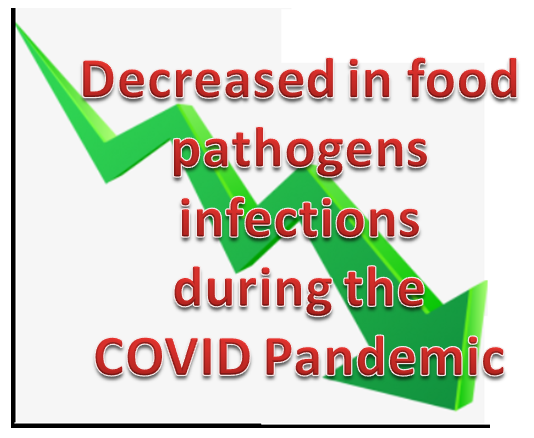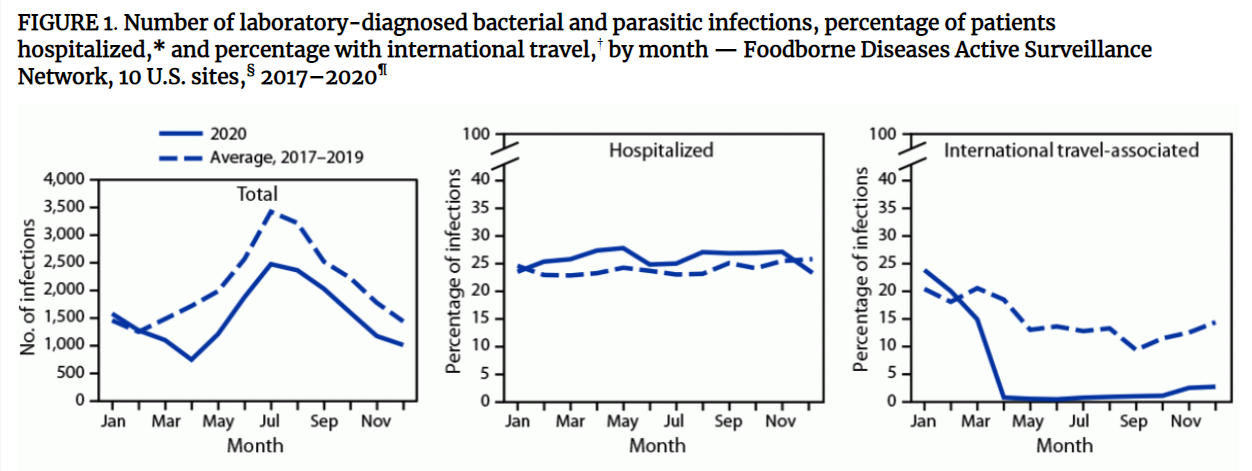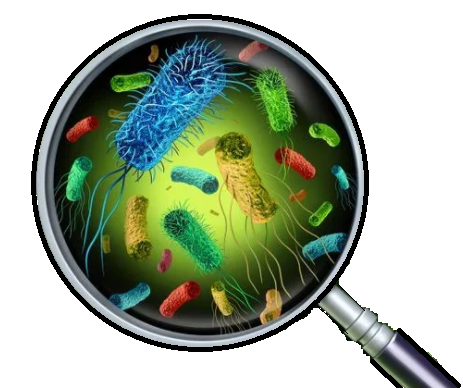Decreased incidence of infections caused by food pathogens during the 2020 COVID-19 Pandemic
 A new research was published in the CDC’s Morbidity and Mortality Weekly Report (Ray LC, Collins JP, Griffin PM, et al. Decreased Incidence of Infections Caused by Pathogens Transmitted Commonly Through Food During the COVID-19 Pandemic — Foodborne Diseases Active Surveillance Network, 10 US Sites, 2017–2020. MMWR Morb Mortal Wkly Rep 2021;70:1332–1336). The report was based on preliminary data from 2020 and issued by the Foodborne Diseases Active Surveillance Network (FoodNet). FoodNet monitors laboratory-diagnosed infections caused by eight pathogens, regularly transmitted through food (Campylobacter, Cyclospora, Listeria, Salmonella, Shiga toxin-producing Escherichia coli (STEC), Shigella, Vibrio, and Yersinia). Cases of infection cover 10 states (covering roughly 15% of the United States’ population).
A new research was published in the CDC’s Morbidity and Mortality Weekly Report (Ray LC, Collins JP, Griffin PM, et al. Decreased Incidence of Infections Caused by Pathogens Transmitted Commonly Through Food During the COVID-19 Pandemic — Foodborne Diseases Active Surveillance Network, 10 US Sites, 2017–2020. MMWR Morb Mortal Wkly Rep 2021;70:1332–1336). The report was based on preliminary data from 2020 and issued by the Foodborne Diseases Active Surveillance Network (FoodNet). FoodNet monitors laboratory-diagnosed infections caused by eight pathogens, regularly transmitted through food (Campylobacter, Cyclospora, Listeria, Salmonella, Shiga toxin-producing Escherichia coli (STEC), Shigella, Vibrio, and Yersinia). Cases of infection cover 10 states (covering roughly 15% of the United States’ population).
Prior to 2020, the incidence of most infections transmitted through food had not declined for many years. The CDC estimates that before 2020, each year, ~48 million people get sick from foodborne illnesses, 128,000 are hospitalized, and 3,000 died. FoodNet identified 26% fewer infections in 2020, compared with the average annual number during 2017–2019, including decreased infections associated with international travel. The decline was from 50 cases/100,000 during 2017-2019 to 37 cases/100,000 in 2020. The 26% decrease in the incidence of infections caused by food pathogens during 2020 was the most significant single-year variation in incidence during 25 years of FoodNet surveillance.
On March 13, 2020, the US declared a national emergency in response to the COVID-19 Pandemic. As a result, restaurants and schools were closed, and travel restrictions were imposed. Many changes in behavior and health care restrictions were also imposed. Many travel restrictions were also imposed. One crucial change implemented at the beginning of the outbreak was the dedication that many felt to washing hands. It is important to understand the impact of these changes on the reduction of foodborne outbreaks.

During 2020, FoodNet detected 18,462 cases of infection, 4,788 hospitalizations, and 118 deaths. The total cases were highest for Campylobacter (14.4/100,000 population), Salmonella came next (13.3), and then STEC (3.6), Shigella (3.1), Yersinia (0.9), Vibrio (0.7), Cyclospora (0.6), and Listeria (0.2). The prevalence in 2020 was significantly lower for all pathogens except Yersinia and Cyclospora. During 2020, only 5% (958) of infections were related to international travel compared with 14% during 2017–2019. Most of the 2020 infections (798; 83%) occurred in January–March, before imposed restrictions.
Travel restrictions caused infections associated with international travel to decrease markedly. Other factors contributing to the decline were restaurant closures. However, many infections might have been undetected because of changes imposed during the Pandemic Such as broader use of telemedicine might have limited the number of stool specimens tested.

Public health interventions to prevent SARS-CoV-2 transmission might have influenced the exposures related to enteric diseases. Continued surveillance could improve the understanding of how the Pandemic affected foodborne illness and might help identify prevention measures and strategies that target particular pathogens and foods.
However, it is also conceivable that the decrease in cases might be related to the under-reporting of such cases. Patients with mild symptoms might not have looked for treatment and instead used telemedicine or ignored the problem. Others might not have had access to physicians.
The decrease seen in 2020 is unlikely to repeat in the coming years as people go back to their routines pre-pandemic by eating out again or going on vacation; infections are likely to increase.
